|
In the late 1980s the struggle for human rights and freedom in the Baltic States grew into a mass movement. On June 14, 1987, the Latvian human rights defense group “Helsinki 86” invited people to gather and lay flowers in memory of the victims of Stalinism at the Freedom Monument in Riga. The anniversary of the 1939 Molotov-Ribbentrop Pact was openly observed for the first time on August 23, 1987.
The socio-political organizations “Sajudis” (Lithuania) and “Popular Front” (Latvia and Estonia) were founded in 1988. Hundreds of thousands of Estonians, Latvians, and Lithuanians united in political activity, as well as in song. On August 23, 1989, people lined up and held hands to form a “Baltic Road” across Estonia, Latvia, and Lithuania. Demands for statehood now joined the decades-long demand for the observance of human rights. A clear socio-political goal was formulated and expressed: the renewal of Lithuania's, Latvia's, and Estonia's independence. “Sajudis” and the two Popular Fronts won majorities in the 1990 parliament (Supreme Council) elections in all three republics. On March 11, 1990, the Lithuanian SSR Supreme Council passed a bill proclaiming the full independence of the Republic of Lithuania. On March 11, 1990, the Lithuanian SSR Supreme Council passed the “Declaration of the Restoration of the Independence of the Republic of Lithuania” and proclaimed full independence. On March 30 of the same year the Estonian SSR Supreme Council declared the beginning of a transition period towards independence, and on May 8 the Estonian SSR was renamed the Republic of Estonia. The Supreme Council of the Latvian SSR proclaimed independence and the beginning of a transition period towards independence on May 4, 1990.

On June 14, 1987, the Latvian human rights defense group “Helsinki-86” organized a commemoration of the June 14, 1941, deportations at the Freedom Monument in Riga. Members of the Helsinki-86 group placed flowers at the base of the monument.
Popular Front Museum (Latvia) Nr. 3340. |
On June 14, 1987, the Latvian human rights defense group “Helsinki-86” organized a commemoration of the June 14, 1941, deportations at the Freedom Monument in Riga. Members of the Helsinki-86 group placed flowers at the base of the monument. Others followed, and the event became the first mass demonstration at the Freedom Monument during the Soviet occupation. On April 13, 1969, Latvian student Ilya Rips protested the occupation of Czechoslovakia by setting fire to himself in front of the Freedom Monument. |

A letter from United States senators to the General Secretary of the Communist Party of the Soviet Union (CPSU) Mikhail Gorbachev on August 18, 1987. The senators reminded Gorbachev of the Molotov-Ribbentrop Pact signed on August 23, 1939, which brought the independent Baltic States into the Soviet sphere of influence. The senators expressed their worries about discussions concerning key events in Baltic history and the suppression of the freedom of speech. They appealed to Gorbachev to honor human rights and to impede threats to the upcoming peaceful demonstrations planned for August 23, 1987, in Lithuania, Estonia, and Latvia. The US politicians also asked Gorbachev to publish the Molotov-Ribbentrop Pact and to begin an open discussion about the pact's consequences.
State Archives of Latvia- 2253-1-v-24, pp. 1- 3. Copy.
|
A letter from United States senators to the General Secretary of the Communist Party of the Soviet Union (CPSU) Mikhail Gorbachev on August 18, 1987. The senators reminded Gorbachev of the Molotov-Ribbentrop Pact signed on August 23, 1939, which brought the independent Baltic States into the Soviet sphere of influence. The senators expressed their worries about discussions concerning key events in Baltic history and the suppression of the freedom of speech. They appealed to Gorbachev to honor human rights and to impede threats to the upcoming peaceful demonstrations planned for August 23, 1987, in Lithuania, Estonia, and Latvia. The US politicians also asked Gorbachev to publish the Molotov-Ribbentrop Pact and to begin an open discussion about the pact's consequences. |
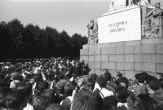
The August 23, 1987, protest rally organized by the Latvian human rights defense group Helsinki-86 in conjunction with the anniversary of the signing of the Molotov-Ribbentrop Pact. Many people took part in the event, and some were detained by the repressive establishment.
Latvia State Archive of Film, Photography and Audiovisual Documents, arh. nr. 133730N. |
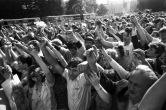
The August 23, 1987, protest rally organized by the Latvian human rights defense group Helsinki-86 in conjunction with the anniversary of the signing of the Molotov-Ribbentrop Pact. Many people took part in the event, and some were detained by the repressive establishment.
Latvia State Archive of Film, Photography and Audiovisual Documents, arh. nr. 133739N. |
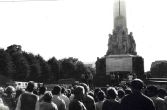
The August 23, 1987, protest rally organized by the Latvian human rights defense group Helsinki-86 in conjunction with the anniversary of the signing of the Molotov-Ribbentrop Pact. Many people took part in the event, and some were detained by the repressive establishment.
State Archives of Latvia 2197- 1-v-87, pp. 447.
|
The August 23, 1987, protest rally organized by the Latvian human rights defense group Helsinki-86 in conjunction with the anniversary of the signing of the Molotov-Ribbentrop Pact. Many people took part in the event, and some were detained by the repressive establishment.
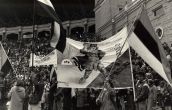
The Latvian rally “For a legal state in Latvia” on October 7, 1988, a day before the founding congress of the Popular Front of Latvia. Approximately 120,000 people took part in the rally.
Photo by Pçteris Korsaks, from his personal collection.
|
The Latvian rally “For a legal state in Latvia” on October 7, 1988, a day before the founding congress of the Popular Front of Latvia. Approximately 120,000 people took part in the rally. |
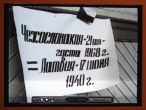
A rally on August 21, 1989, organized by the Democratic Union party, active in both Latvia and Russia, to commemorate the occupation of Czechoslovakia. The participants of the rally emphasized the similarities in the histories of Czechoslovakia and Latvia , as both were affected by Soviet occupation.
Scenes from a video by Raits Valters, from him personal collection. |
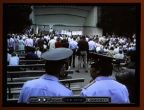
A rally on August 21, 1989, organized by the Democratic Union party, active in both Latvia and Russia, to commemorate the occupation of Czechoslovakia. The participants of the rally emphasized the similarities in the histories of Czechoslovakia and Latvia, as both were affected by Soviet occupation.
Scenes from a video by Raits Valters, from him personal collection.
|
A rally on August 21, 1989, organized by the Democratic Union party, active in both Latvia and Russia, to commemorate the occupation of Czechoslovakia. The participants of the rally emphasized the similarities in the histories of Czechoslovakia and Latvia, as both were affected by Soviet occupation. This fact is also reflected in the poster seen in the photo, which displays the date of the occupation of Czechoslovakia - August 21, 1968 - and the date of the Soviet occupation of Latvia: June 17, 1940. A Czechoslovak flag with “Charter 77” is attached to the poster. The Charter 77 human rights movement and the Democratic Union had similar goals concerning human rights. |
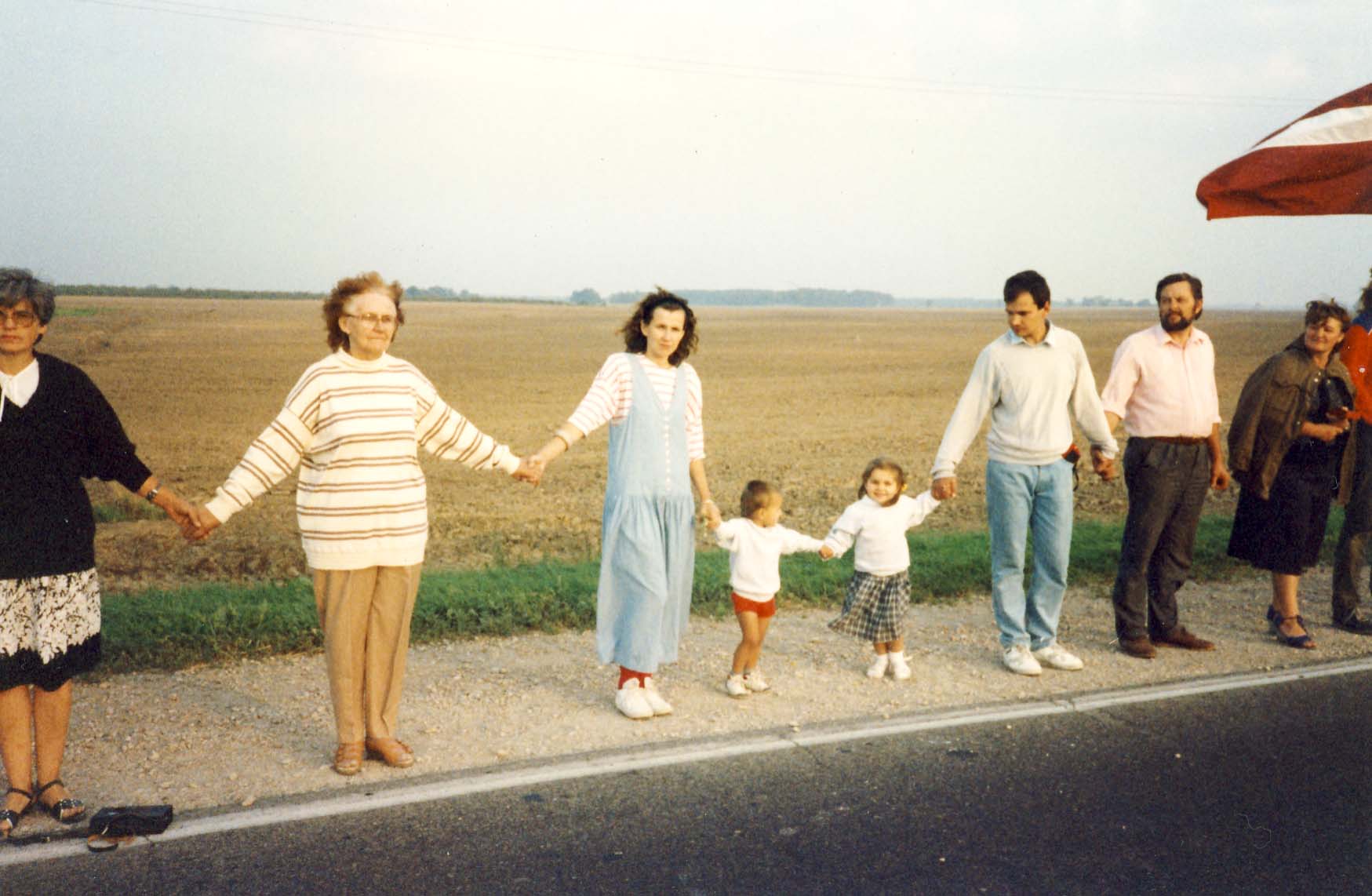
Participants of the Baltic Way on a Bauska- Riga highway. August 23, 1989.
Peteris Skinkis private collection. |
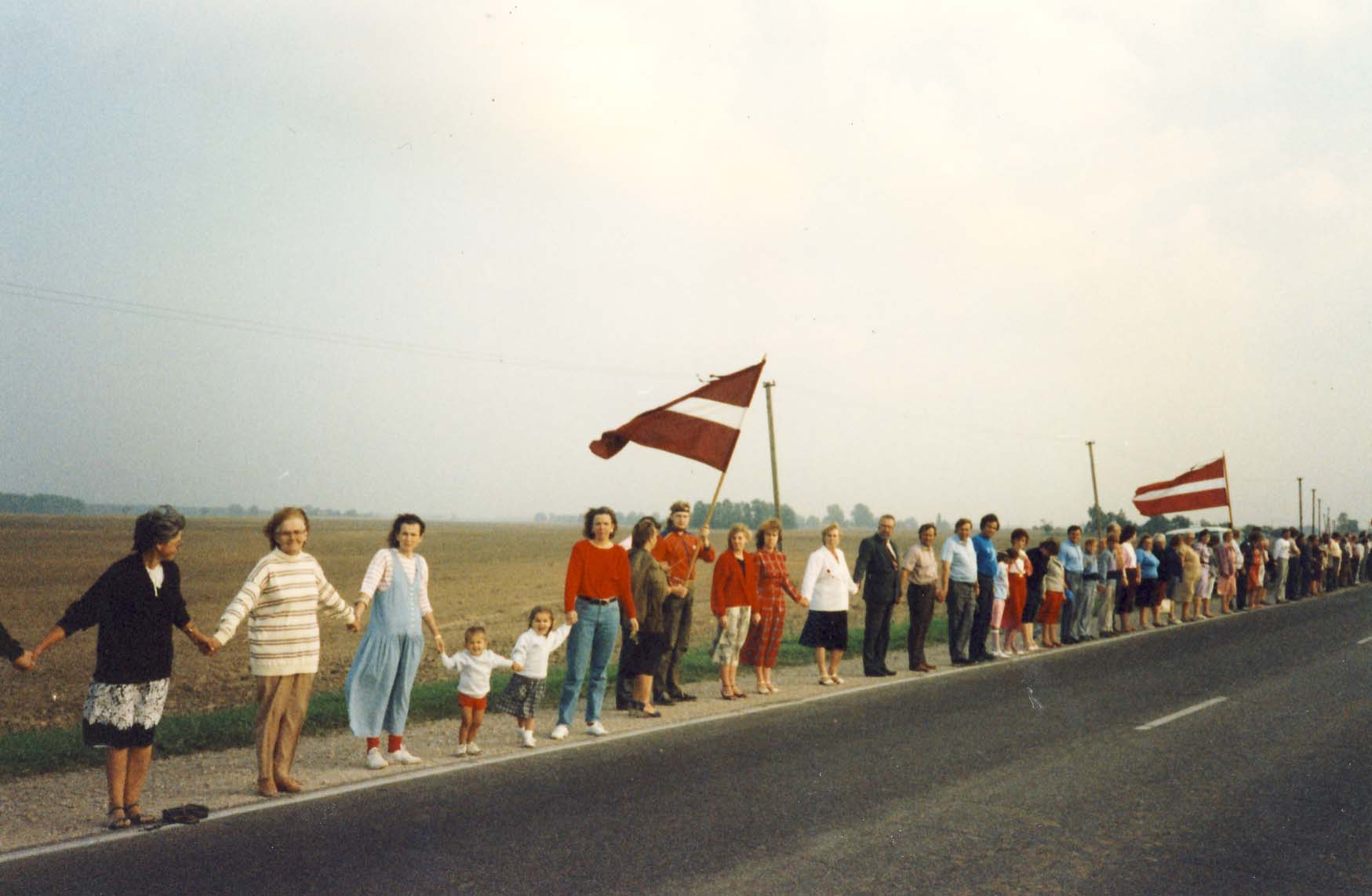
Participants of the Baltic Way on a Bauska- Riga highway. August 23, 1989.
Iveta Skinke private collection. |
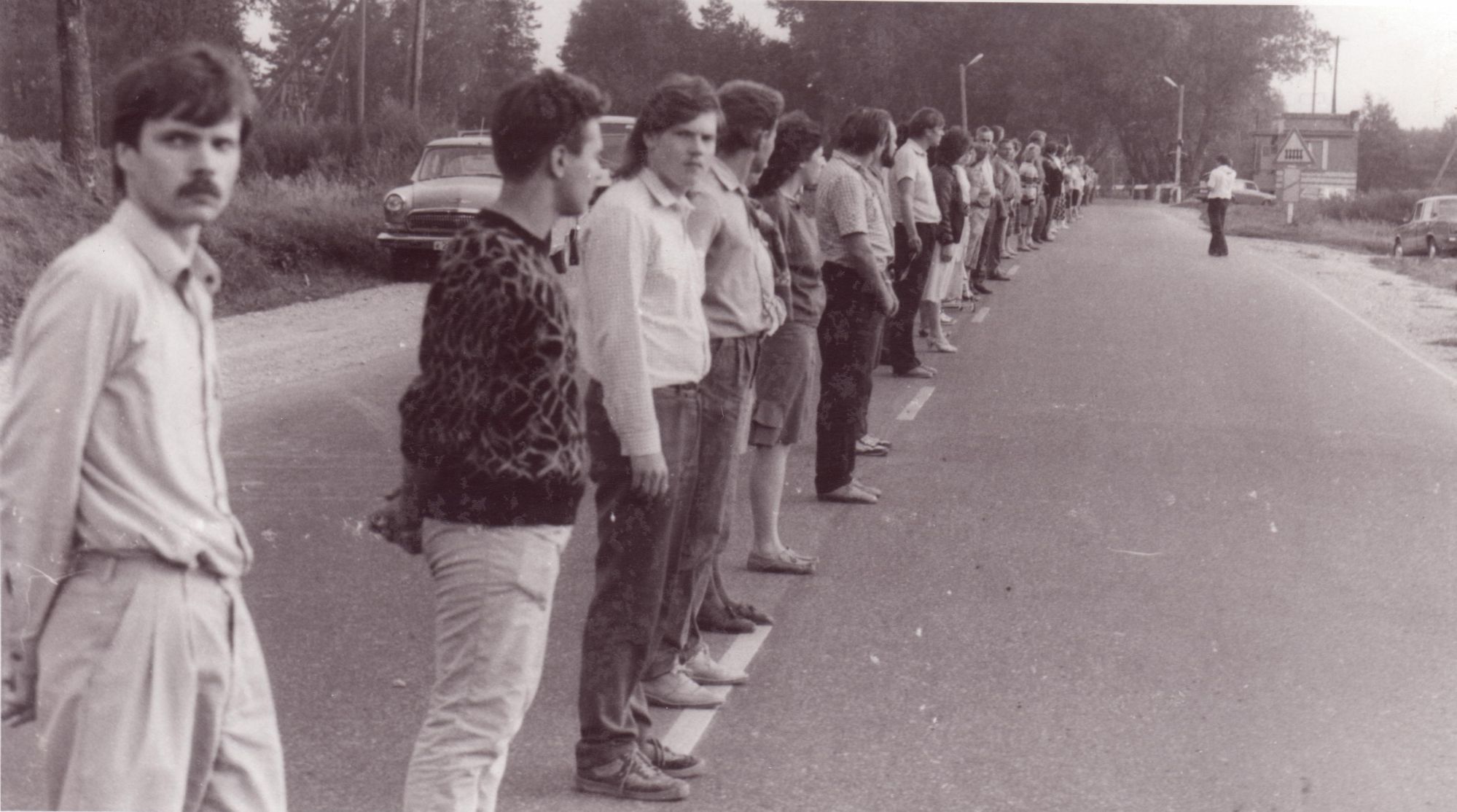
Participants of the Baltic Way on a Bauska- Riga highway. August 23, 1989.
Ainars Mazversitis private collection. |
In August 23, 1989 more than a million people in Latvia, Lithuania and Estonia joined their hands to for a human chain spanning over 600 kilometers from Toompea Castle in Tallinn till Gediminas Tower in Vilnius.
|
 |
The documentary heritage of the Baltic Way added to UNESCO's Memory of the World Register, 31 July 2009. |
The Director-General of UNESCO, Koïchiro Matsuura, announced on 30 July the inscription of 35 new items of documentary heritage of exceptional value to UNESCO's Memory of the World Register. This brings the total number of inscriptions since 1997 to 193. These items were added on the recommendation of experts during a 3-day meeting of the International Advisory Committee (IAC) of UNESCO's Memory of the World Programme which ended on 31 July in Bridgetown, Barbados.
Among the new inscriptions there are also documents proposed by Estonia, Latvia and Lithuania recording the 600 km long human chain formed in the three Baltic States on 23 August 1989 to mark the 50th anniversary of the German-Soviet pact of non-aggression of 1939 and its secret protocol. It was a unique and peaceful demonstration that united the three countries in their drive for freedom.
http://www.balticway.net/ |
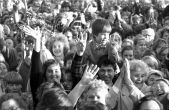
Latvian citizens at the Saeima (Latvian parliament)
after the passing of the Declaration of the Restoration
of the Independence of the Republic of Latvia
by the Supreme Council of the Latvian SSR on May 4, 1990.
Latvia State Archive of Film, Photography and Audiovisual Documents
arh. nr. 184329N. Photo by B. Koïesòikovs.
|
Latvian citizens at the Saeima (Latvian parliament)
after the passing of the Declaration of the Restoration
of the Independence of the Republic of Latvia
by the Supreme Council of the Latvian SSR on May 4, 1990. |
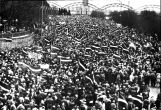
A rally organized by the Popular Front of Latvia on January 13, 1991.
Latvia State Archive of Film, Photography and Audiovisual Documents arh. nr. 16483-I, Photo by A.Eglîtis.
|
A rally organized by the Popular Front of Latvia on January 13, 1991. |

SSR on May 4, 1990. The declaration renewed the Republic of Latvia proclaimed on November 18, 1918. At the same time the parliament declared a de facto transition period. The Latvian parliament declared full independence from the USSR on August 21, 1991.
Archives of the Saeima of the Republic of Latvia 290-10-2932, pp. 41- 42.
|
SSR on May 4, 1990. The declaration renewed the Republic of Latvia proclaimed on November 18, 1918. At the same time the parliament declared a de facto transition period. The Latvian parliament declared full independence from the USSR on August 21, 1991. |
|
|
